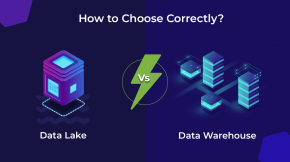Balancing the Scale: The Critical Role of Small Language Models (SLMs) in the age of LLM
In 2023, Gartner reported that by 2026, 80% of enterprises will have adopted AI, yet only 20% will have achieved their AI goals. Why? Because technology alone isn’t enough; it’s about choosing the right tools for the job. You’ve probably heard a lot about Large Language Models (LLMs) like GPT-3 or GPT-4—they’re the giants of the AI world, grabbing headlines and dominating discussions. But here’s the thing: sometimes, smaller is better.
Enter Small Language Models (SLMs). They may not make the front page, but they’re quietly revolutionizing industries, offering efficiency, cost-effectiveness, and precision. If you’re wondering how these understated powerhouses can meet your business needs, you’re in the right place.
Understanding Large Language Models (LLMs)
Large Language Models (LLMs) have revolutionized the field of natural language processing (NLP) with their impressive capabilities. These models, characterized by billions of parameters, can understand and generate human-like text, making them invaluable for various applications. LLMs, such as GPT-3, excel in tasks that require deep understanding, contextual awareness, and creative text generation. Their extensive training on vast datasets allows them to perform well in general language understanding and diverse applications.
Understanding Small Language Models (SLMs)
The proverb “You don’t need a sword where a needle can work” aptly describes the relationship between Large Language Models (LLMs) and Small Language Models (SLMs). While LLMs are trained on vast amounts of text data, containing a large number of parameters and capable of understanding and generating complex language, SLMs are designed using similar deep learning neural network architectures but are trained on less data and have fewer parameters. This makes SLMs more appropirate for specific NLP tasks. They are optimized for efficiency and speed, making them ideal for applications where computational resources are limited or where rapid responses are crucial. Despite their smaller size, SLMs can perform a variety of natural language processing (NLP) tasks, such as text classification, sentiment analysis, and conversational AI. Their reduced complexity allows for easier deployment and integration into various systems, making SLMs a practical choice for many real-world applications.
Choosing Small Language Models: When and Why
While LLMs offer significant advantages, there are compelling reasons to consider Small Language Models (SLMs) for certain tasks and applications. The primary motivations for switching from LLMs to SLMs include efficiency, cost-effectiveness, and domain specificity.
- Efficiency: SLMs require less computational power and memory, making them faster to train and deploy. This efficiency is crucial for applications with limited resources or time constraints.
- Lower Cost: Training and maintaining SLMs is generally less expensive than large ones, as they require fewer computational resources. This cost-effectiveness can be a decisive factor for businesses and researchers with budget constraints.
- Domain-Specific Tasks: SLMs can be fine-tuned for a particular task or domain, with output being better understanding and performance in those areas. This specialization allows for more accurate and relevant outputs in niche fields.
Comparison of Capabilities: SLMs vs. LLMs
When comparing SLMs and LLMs, it’s essential to consider their respective strengths and limitations to determine the most suitable model for a given task.
1. Efficiency:
- SLMs: Needs less computational memory and power, making them perfect for apps with limited resources. Faster to train and deploy.
- LLMs: Require significant computational resources, which can be a limitation for some applications. Training and deployment can be time-consuming and resource-intensive.
2. Cost:
- SLMs: Lower cost due to reduced computational requirements. They are more accessible for businesses and researchers with limited budgets.
- LLMs: Higher cost associated with their extensive training and maintenance. Suitable for organizations with substantial resources.
3. Performance:
- SLMs: Can be fine-tuned for specific domains or tasks, providing better performance in those areas. However, they may lack the broad contextual understanding of LLMs.
- LLMs: Excel in tasks requiring deep understanding, contextual awareness, and versatility. They perform well in general language understanding and creative text generation.
Choosing the Right Language Model
Selecting the appropriate language model depends on several factors, including task requirements, available resources, and domain specificity.
1. Task Requirements:
- For tasks involving generating short text snippets or specific domain applications, SLMs may suffice.
- For complex tasks requiring deeper understanding and context, LLMs are more suitable.
2. Available Resources:
- If computational power, memory, and budget are limited, SLMs are a better choice due to their efficiency and lower cost.
- Organizations with substantial resources can leverage the capabilities of LLMs.
3. Domain Specificity:
- If the task is highly domain-specific, fine-tuning an SLM for that domain can yield better results than using a large, generic model.
- For broader applications, LLMs provide a more comprehensive solution.
Example of Use Cases
The Versatility of SLMs: Enhancing Mobile Apps, Video Games, and Other Devices
The integration of SLMs (Small Language Models) into mobile apps, video games, and various devices showcases their adaptability and potential to transform user experiences in significant ways:
Mobile Apps
SLMs are making mobile apps smarter and more efficient by enabling advanced functionalities even without internet access:
- Offline Translation: Travel apps can embed SLMs to translate menus, signs, or simple conversation phrases directly on the device, eliminating the need for an internet connection.
- Grammar and Spelling Checkers: Writing and note-taking apps can leverage SLMs to provide enhanced grammar and spelling suggestions offline, ensuring users can write confidently anywhere, anytime.
- Text Summarization: News and productivity apps can use SLMs to condense long articles or documents locally, allowing users to quickly digest important information without relying on online services.
Video Games
- SLMs are elevating gaming experiences by generating dynamic and contextually rich content, contributing to more engaging and immersive gameplay:
- Dynamic Dialogue Generation: In offline games, SLMs can create varied and context-aware dialogues for non-player characters (NPCs), leading to more engaging and less repetitive interactions.
- Procedural Text Generation: Open-world games can use SLMs to generate item descriptions, quest details, or even environmental narratives on the fly, adding depth and variety to the gaming world.
Other Devices
- SLMs are proving their utility in smartwatches, smart appliances, and other devices by enabling efficient offline processing and command execution:
- Smartwatches: Voice assistants on smartwatches can harness SLMs to process basic commands and provide responses offline, ensuring reliability even in areas with poor connectivity.
- Smart Appliances: SLMs can power voice recognition and handle simple command processing in offline modes, making smart appliances more responsive and user-friendly without needing constant internet access.
Top Small Language Models Shaping the Future of AI
Here’s a curated list of the most impactful Small Language Models (SLMs) currently revolutionizing various sectors:
Llama 2 7B
Developed by Meta AI, Llama 2 stands at the forefront of open-source language models. The 7 billion parameter variant, specifically designed for research purposes, has shown remarkable improvements in text generation, translation, and code generation. Its multilingual capabilities and specialized versions, like Code Llama, make it a powerful tool for diverse applications.
Alpaca 7B
Alpaca 7B is a cost-effective model that mirrors Meta’s LLaMA with impressive efficiency. It demonstrates how advanced Natural Language Processing (NLP) can be achieved within a budget-friendly framework, making significant strides in the field without compromising on performance.
Falcon 7B
From the Technology Innovation Institute (TII) in the UAE, Falcon 7B is celebrated for its efficiency and high performance, particularly in tasks like chatting and question answering. It’s optimized for processing large datasets, making it a robust choice for applications requiring extensive text processing.
Phi 2
Engineered by Microsoft, Phi 2 is designed for efficiency and adaptability, excelling in various reasoning and understanding tasks. Announced at Ignite 2023, this model, with its 13-billion-parameter architecture, is particularly well-suited for edge and cloud deployments, showcasing Microsoft’s commitment to advancing SLM technology.
BERT Mini, Small, Medium, and Tiny
Google’s scaled-down versions of BERT cater to different resource constraints, offering flexibility with models ranging from BERT Mini (4.4 million parameters) to BERT Medium (41 million parameters). These models are ideal for applications that require efficient NLP processing within limited computational environments.
GPT-Neo and GPT-J
OpenAI’s GPT-Neo and GPT-J models are scaled-down versions of the GPT family, designed to fit scenarios where computational resources are more limited. They offer robust NLP capabilities while being more accessible for a broader range of applications.
MobileBERT
Optimized specifically for mobile computing, MobileBERT provides efficient NLP performance within the constraints of mobile devices. It’s designed to deliver high-quality language understanding and generation on the go, making it a go-to option for mobile-centric applications.
Gemini Nano
Part of Google DeepMind’s Gemini family, Gemini Nano is engineered for efficiency on edge devices like smartphones. Available in two sizes—Nano-1 (1.8 billion parameters) and Nano-2 (3.25 billion parameters)—these models are distilled from larger versions to optimize on-device tasks that require efficient AI processing.
The diversity and sophistication of these SLMs highlight an ongoing revolution in AI, emphasizing the shift towards models that not only operate efficiently across a wide range of tasks but are also accessible for deployment in various environments. This marks a significant step forward in making advanced NLP capabilities broadly available, driving innovation, and enhancing the naturalness of human-computer interactions.
Deploying SLM Locally vs Cloud Services
Locally
Deploying a Small Language Model (SLM) locally requires certain hardware specifications to ensure smooth and efficient operation. Here are the general hardware requirements for deploying an SLM locally:
CPU
- Type: A multi-core processor (e.g., Intel i5/i7/i9 or AMD Ryzen 5/7/9).
- Cores: At least 4 cores (8 threads) is recommended, but more cores can improve performance, especially during training or heavy inference tasks.
- Clock Speed: Higher clock speeds (3.0 GHz or more) can help with faster processing.
GPU
- Type: A dedicated GPU from NVIDIA or AMD with CUDA (for NVIDIA) support if you’re using deep learning frameworks like TensorFlow or PyTorch.
- Memory: At least 4GB of VRAM, but 8GB or more is recommended for handling larger models and datasets.
- Models: NVIDIA GTX 1660, RTX 2060, or better. For more intensive tasks, consider NVIDIA RTX 3080, 3090, or A-series GPUs like A100.
RAM
Amount: At least 16GB of RAM, but 32GB or more is recommended for handling large datasets and ensuring smooth multitasking.
Storage
- Type: SSD (Solid State Drive) for faster read/write speeds.
- Capacity: At least 256GB, but 512GB or more is recommended if you’re working with large datasets or multiple models.
Other Considerations
- Power Supply: Ensure your power supply unit (PSU) can support your GPU and other components.
- Cooling: Adequate cooling solutions (CPU coolers, case fans) to prevent overheating during heavy workloads.
- Network: A stable internet connection for downloading models and datasets, though inference can be done offline.
Example Configuration
Here’s an example configuration for a local machine to deploy an SLM:
- CPU: Intel Core i7-10700K (8 cores, 16 threads, 3.8 GHz base clock)
- GPU: NVIDIA RTX 3060 (12GB VRAM)
- RAM: 32GB DDR4
- Storage: 1TB NVMe SSD
- Power Supply: 750W PSU
- Cooling: Aftermarket CPU cooler (e.g., Noctua NH-D15) and additional case fans
- OS: Windows 10/11 or Linux (Ubuntu 20.04 or newer)
Cloud Deployment of Small Language Models (SLMs)
Cloud platforms like AWS, Hugging Face, Google Cloud etc. provide a robust infrastructure for deploying Small Language Models (SLMs). These platforms offer various compute instances optimized for machine learning and graphics-intensive applications, ensuring high performance and reliability. By leveraging these cloud services, you can deploy SLMs efficiently and scale as needed to meet the demands of your applications.
Example: Deploying Falcon 40B
To deploy the Falcon 40B model, we can utilize G5 instances, which are optimized for graphics-intensive and machine-learning applications. G5 instances are equipped with NVIDIA A10G Tensor Core GPUs, delivering the high performance necessary for demanding workloads. Each instance features up to 8 A10G Tensor Core GPUs, each with 24 GB of memory, and includes 80 ray tracing cores. Additionally, these GPUs come with 320 third-generation NVIDIA Tensor Cores, capable of delivering up to 250 TOPS (Tera Operations Per Second). This setup ensures that the instances can handle substantial machine learning workloads efficiently. For reliability, it’s advisable to run at least two instances to ensure fault tolerance and high availability, making this configuration ideal for hosting the Falcon 40B model in a production environment.
How Beyond Key Helps
You’ve seen how powerful Small Language Models can be. Now, how do you harness this power for your business? That’s where Beyond Key comes in.
Expertise You Can Trust
With years of experience in AI and machine learning, Beyond Key is your trusted partner in GenAI and LLM Development Services. We understand that every business is unique, and so are its challenges. That’s why we offer tailored solutions designed to meet your specific needs.
Comprehensive Services
From consulting to deployment, our LLM Development Services cover every aspect of AI integration. Whether you’re looking to develop a new application, optimize an existing one, or explore the potential of SLMs, we’ve got you covered. We’ll work with you every step of the way, ensuring your AI solutions are efficient, cost-effective, and designed to drive results.
Proven Track Record
Our success speaks for itself. We’ve helped businesses across industries leverage the power of AI to solve complex problems, improve efficiency, and gain a competitive edge. When you work with Beyond Key, you’re not just getting a service provider—you’re getting a partner committed to your success.
Ready to Transform?
The future of AI is here, and it’s more accessible than ever. If you’re ready to explore the potential of Small Language Models and take your business to the next level, let’s talk. Visit our GenAI services page to learn more about how we can help you harness the power of AI.
Your Next Step
You’ve got the knowledge. You understand the power of Small Language Models and how they can benefit your business. Now, it’s time to act. Whether you’re looking to optimize your operations, enhance your customer experience, or explore new opportunities in AI, Beyond Key is here to help. Don’t wait—reach out today and discover how we can help you turn your AI vision into reality with our comprehensive LLM Development Services.
Your business deserves the best. And with Beyond Key, that’s exactly what you’ll get.
Let’s make the future happen, together.












